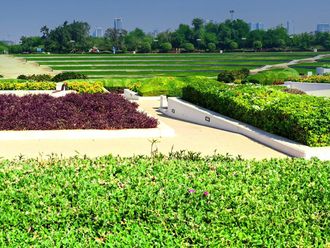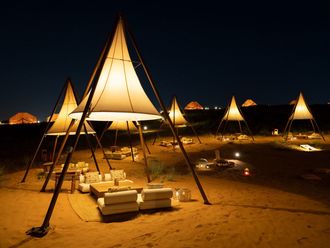Archaeologists have discovered flint tools and the remains of small buildings dating back 7,000 years in the Empty Quarter near Al Ain.
Finely made flint tools demonstrate that the human settlements in the area from about 7,000 years ago took advantage of the many locally available resources.The discoveries at an undisclosed location in Sharjah - were made in the areas of Kharimat Khor Al Manahil and Khor Al Manahil by Abu Dhabi Islands Archaeological Survey (Adias).
The two areas are just north of Umm Al Zamul, where the borders of the UAE, Oman and Saudi Arabia meet.
Announcing the details, Adias said during fieldwork in the deserts of southeastern Abu Dhabi in early 2004, archaeologists came across numerous sites dating back to the Neolithic period about 7,000 years ago.
Finds at the sites included dozens of finely made flint tools plus important remains of small buildings, said Peter Hellyer, executive director of Adias.
No buildings of this date had previously been identified in Abu Dhabi's deserts, he said.
Work largely concentrated on the Khor Al Manahil region.
Archaeologists carried out further studies of the existing sites. They also undertook surveys of other plains to see whether the Neolithic settlements extended over a wider area.
Dr Mark Beech, Adias senior resident archaeologist, who carried out the survey work, said: "The results of this season are of great importance to our understanding of the early history of the emirates.
"They demonstrate that this now remote desert area was once lush with vegetation, which had a regular supply of sweet water.
"The people at this time about 7,000 years ago were nomadic pastoralists, and they would have regularly occupied the Umm Al Zamul area, taking advantage of the numerous locally available resources."
Both Kharimat Khor Al Manahil and Khor Al Manahil are long, open plains, with high sand dunes to the north, south and west.
During the Neolithic period, the climate in the UAE was much wetter than today, and the plains may have been lakes.
According to Adias, there would have also been much more vegetation and wildlife than today, providing inhabitants with ample pasture for their herds of sheep and goats as well as opportunities for hunting such animals as gazelle and oryx.










